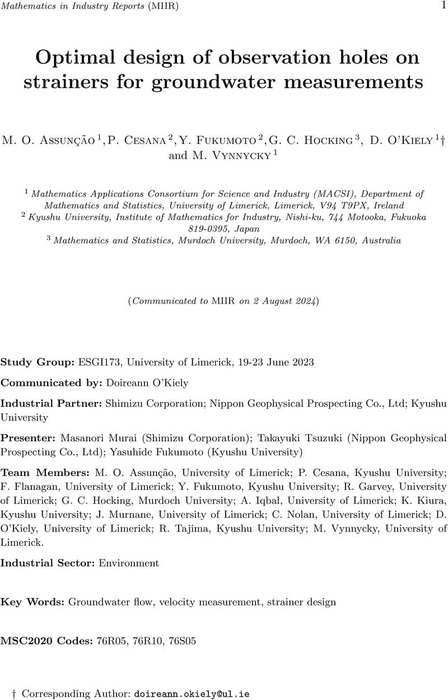Abstract
A common method for determining the direction and speed of groundwater is using cylindrical “strainers”, which are bored into the ground to depths up to 50 metres. The strainer has an array of “observation holes” which allow water through and a heater at the centre which heats the water as it passes. Measurements of the temperature distribution are made via an array of sensors placed around the heater, and then used to infer information about the direction and speed of groundwater flow.
In this report, we investigate two different strainer designs: one with circular holes and the other with slit-shaped holes. A combination of analysis and computational fluid dynamics is used to better understand the momentum and heat transfer associated with the two designs; even probability theory is used shed light on why the strainer with slit-shaped holes has historically been found to give inaccurate results in 20% of experiments.
Content



![Author ORCID: We display the ORCID iD icon alongside authors names on our website to acknowledge that the ORCiD has been authenticated when entered by the user. To view the users ORCiD record click the icon. [opens in a new tab]](https://www.cambridge.org/engage/assets/public/miir/logo/orcid.png)

